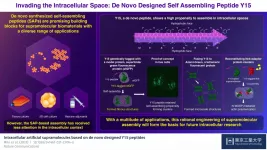These immune cells are better equipped to mobilize quickly against SARS-CoV-2, the coronavirus responsible for COVID-19, if they've already met its gentler cousins, the scientists concluded.
The findings may help explain why some people, particularly children, seem much more resilient than others to infection by SARS-CoV-2, the coronavirus that causes COVID-19. They also might make it possible to predict which people are likely to develop the most severe symptoms of COVID-19.
The immune cells in question, called killer T cells, roam through the blood and lymph, park in tissues and carry out stop-and-frisk operations on resident cells. The study, published online July 1 in Science Immunology, showed that killer T cells taken from the sickest COVID-19 patients exhibit fewer signs of having had previous run-ins with common-cold-causing coronaviruses.
Discussions about immunity to COVID-19 often center on antibodies -- proteins that can latch onto a virus before it's able to infect a vulnerable cell. But antibodies are easily fooled, said Mark Davis, PhD, a professor of microbiology and immunology; director of Stanford's Institute for Immunity, Transplantation and Infection; and a Howard Hughes Medical Institute investigator. Davis is the study's senior author.
"Pathogens evolve quickly and 'learn' to hide their critical features from our antibodies," said Davis, who is also the Burt and Marion Avery Family Professor. But T cells recognize pathogens in a different way, and they're tough to fool.
Our cells all issue real-time reports on their inner state of affairs by routinely sawing up some samples of each protein they've made lately into tiny pieces called peptides and displaying those peptides on their surfaces for inspection by T cells.
When a killer T-cell's receptor notices a peptide on a cell's surface that doesn't belong there -- for example, it's from a protein produced by an invading microorganism -- the T cell declares war. It multiplies furiously, and its numerous offspring -- whose receptors all target the same peptide sequence -- fire up to destroy any cell carrying these telltale-peptide indications of that cell's invasion by a pathogenic microbe.
Some of the original killer T cell's myriad daughter cells enter a more placid state, remaining above the fray. These "memory T cells" exhibit heightened sensitivity and exceptional longevity. They persist in the blood and lymph often for decades, ready to spring into action should they ever cross paths with the peptide that generated the wave of T-cell expansion that begat them. That readiness can save valuable time in stifling a previously encountered virus or a close cousin.
As the pandemic progressed, Davis mused: "A lot of people get very sick or die from COVID-19, while others are walking around not knowing they have it. Why?"
To find out, the study's first author, postdoctoral fellow Vamsee Mallajosyula, PhD, first confirmed that some portions of SARS-CoV-2's sequence are effectively identical to analogous portions of one or more of the four widespread common-cold-causing coronavirus strains. Then he assembled a panel of 24 different peptide sequences that were either unique to proteins made by SARS-CoV-2 or also found on similar proteins made by one or more (or even all) of the seasonal strains.
The researchers analyzed blood samples taken from healthy donors before the COVID-19 pandemic began, meaning they'd never encountered SARS-CoV-2 -- although many presumably had been exposed to common-cold-causing coronavirus strains. The scientists determined the numbers of T cells targeting each peptide represented in the panel.
They found that unexposed individuals' killer T cells targeting SARS-CoV-2 peptides that were shared with other coronaviruses were more likely to have proliferated than killer T cells targeting peptides found only on SARS-CoV-2. The T cells targeting those shared peptide sequences had probably previously encountered one or another gentler coronavirus strain -- and had proliferated in response, Davis said.
Many of these killer T cells were in "memory" mode, he added.
"Memory cells are by far the most active in infectious-disease defense," Davis said. "They're what you want to have in order to fight off a recurring pathogen. They're what vaccines are meant to generate."
Killer T cells whose receptors target peptide sequences unique to SARS-CoV-2 must proliferate over several days to get up to speed after exposure to the virus, Davis said. "That lost time can spell the difference between never even noticing you have a disease and dying from it," he said.
To test this hypothesis, Davis and his colleagues turned to blood samples from COVID-19 patients. They found that, sure enough, COVID-19 patients with milder symptoms tended to have lots of killer-T memory cells directed at peptides SARS-CoV-2 shared with other coronavirus strains. Sicker patients' expanded killer T-cell counts were mainly among those T cells typically targeting peptides unique to SARS-CoV-2 and, thus, probably had started from scratch in their response to the virus.
"It may be that patients with severe COVID-19 hadn't been infected, at least not recently, by gentler coronavirus strains, so they didn't retain effective memory killer T cells," Davis said.
Davis noted that cold-causing seasonal coronavirus strains are rampant among children, who rarely develop severe COVID-19 even though they're just as likely to get infected as adults are.
"Sniffles and sneezes typify the daycare setting," he said, "and coronavirus-caused common colds are a big part of the reason. As many as 80% of kids in the United States get exposed within the first couple of years of life."
Davis and Mallajosyula have filed, through Stanford's Office of Technology Licensing, for patents on the technology used in this study.
Davis is a member of Stanford Bio-X, the Stanford Cardiovascular Institute, the Stanford Maternal and Child Health Research Institute, the Stanford Cancer Institute and the Stanford Wu Tsai Neurosciences Institute.
INFORMATION:
Other Stanford study co-authors are former undergraduate student Conner Ganjavi; postdoctoral scholar Saborni Chakraborty, PhD; former life science research professionals Alana McSween and Allison Nau; graduate student Ana Jimena Pavlovitch-Bedzyk; life science research professional Julie Wilhelmy; Monali Manohar, PhD, laboratory director and research scientist at the Sean N. Parker Center for Asthma and Allergy Research; and Kari Nadeau, MD, PhD, professor of pediatrics and director of the Sean N. Parker Center.
The work was funded by the National Institutes of Health (grants AI057229 and U01 AI140498); Stanford's Institute for Immunity, Transplantation and Infection; the Howard Hughes Medical Institute; the Bill and Melinda Gates Foundation; the Sean N. Parker Center and the Sunshine Foundation.
Stanford's Department of Microbiology and Immunology also supported the work.
The Stanford University School of Medicine consistently ranks among the nation's top medical schools, integrating research, medical education, patient care and community service. For more news about the school, please visit http://med.stanford.edu/school.html. The medical school is part of Stanford Medicine, which includes Stanford Health Care and Stanford Children's Health. For information about all three, please visit http://med.stanford.edu.


